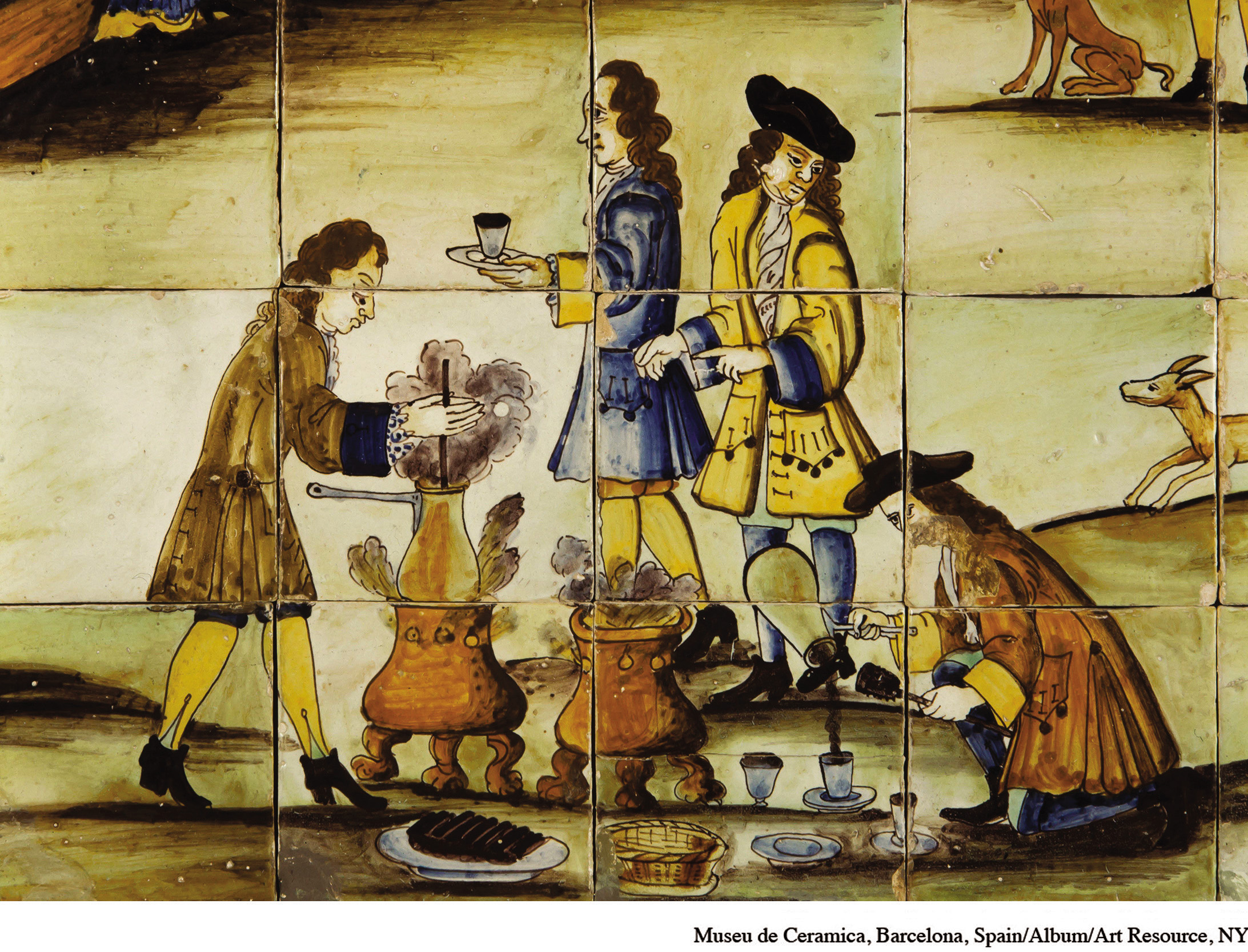14.2 A Chocolate Party in Spain
Like tea from China and coffee from Ethiopia, chocolate from Mesoamerica also became an elite beverage and an indicator of high status in Europe during the early modern era. It was the Olmecs, the Maya, and the Aztecs who first discovered how to process the seeds of the cacao tree into a chocolate drink. After the Spanish conquest of the Aztec Empire, that drink was introduced into Spain, where it became highly fashionable in court and aristocratic circles. And from Spain it spread to much of the rest of Europe, also limited to the elite social classes, who could afford to purchase this expensive import. Not until the Industrial Revolution made it possible to produce solid chocolate candy for mass consumption did this Mesoamerican acquisition become more widely available. Unlike tobacco and coffee, however, chocolate did not take hold in the Islamic world or China until more recent times.
A part of the larger Columbian exchange, chocolate in Europe lost the religious or ritual associations with which the Aztecs had invested it, becoming a medicine, sometimes an aphrodisiac, and in general a recreational beverage. Hernán Cortés, the Spanish conqueror of the Aztecs, described chocolate as “the divine drink which builds up resistance and fights fatigue” and reported, “A cup of this precious drink permits a man to walk for a whole day without food.”41 After some debate, the Church approved it as a nutritional substitute during times of fasting, when taking solid food was forbidden. Europeans also innovated with the beverage, adding sugar, cinnamon, and other spices, and later milk. With ingredients from the Americas and Asia, some of them produced by African slave labor, chocolate illustrated the process by which Europe was becoming the center of an emerging world economy.
Source 14.2, a painted tile panel from the early eighteenth century, shows a chocolatada, or “chocolate party,” in Valencia, Spain. Notice the saucer, or mancerina, also a European innovation, for drinking chocolate without spilling it.

- What marks this event as an upper-
class occasion? - What steps in the preparation of the chocolate drink can you observe in the image?
- Why do you think Europeans embraced a practice of people they regarded as uncivilized, bloodthirsty, and savage? What does this suggest about the process of cultural borrowing?